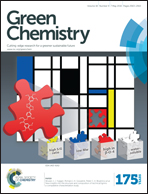A large-scale synthesis of heteroatom (N and S) co-doped hierarchically porous carbon (HPC) derived from polyquaternium for superior oxygen reduction reactivity†
Abstract
A simple, large-scale and green synthetic route is demonstrated for the preparation of polyquaternium derived heteroatom (N and S) co-doped hierarchically porous carbon (HPC). Our protocol allows for the simultaneous optimization of both porous structures and surface functionalities of (N and S) co-doped carbon (N–S-HPC). As a result, the obtained N–S-HPC shows a superior catalytic ORR performance to the commercial Pt/C catalyst in alkaline media, including high catalytic activity, remarkable long-term stability and strong methanol tolerance. Even in acidic media where most non-precious metal catalysts suffer from high overpotential and low durability, our N–S-HPC exhibits an amazing ORR activity with a half-wave potential of 0.73 V, and 40% enhanced limited diffusion-current density when compared to the Pt/C catalyst. Particularly, when used for constructing a zinc–air battery cathode, such an N–S-HPC catalyst can give a discharge peak power density as high as 536 mW cm−2. At 1.0 V of cell voltage, a current density of 317 mA cm−2 is achieved. This performance is superior to all reported non-precious metal catalysts in the literature for zinc–air batteries and significantly outperforms the state-of-the-art platinum-based catalyst.


 Please wait while we load your content...
Please wait while we load your content...